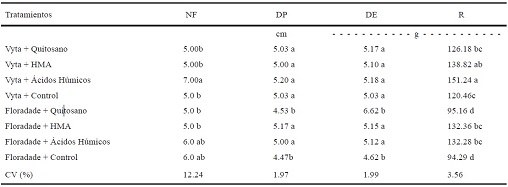Efectividad agrobiológica de quitosano, ácidos húmicos y hongos micorrízicos en dos variedades de tomate (Solanum lycopersicum L.)
DOI:
https://doi.org/10.28940/terra.v40i0.1078Palabras clave:
bioestimulantes, condiciones controladas, hortalizasResumen
En las próximas décadas será crucial satisfacer las demandas de alimentos, sin propiciar la degradación ambiental, no sólo para aumentar la producción agrícola en medio del cambio climático, sino también para desarrollar tecnologías innovadoras que aumenten los rendimientos agrícolas, minimicen los insumos y eviten una mayor contaminación ambiental, por lo que actualmente se ensayan en el mundo, numerosos productos de carácter orgánico que son aplicados como agentes nutricionales o estimulantes del crecimiento vegetal. El objetivo de este trabajo fue evaluar la efectividad agrobiológica de quitosano, hongos micorrízicos y ácidos húmicos en el crecimiento y desarrollo en plantas de dos variedades de tomate en condiciones controladas. Se estableció un experimento en un diseño bifactorial, con dos variedades y aplicación de, quitosano (3 g L-1), hongos micorrízicos arbusculares (20 g de esporas mL-1) y ácidos húmicos (1:30 v/v), el tratamiento control fue agua destilada. Las variables evaluadas fueron porcentaje de emergencia total, tasa de emergencia, porcentaje de germinación, longitud de tallo, diámetro del tallo, longitud de raíz y número de hojas, biomasa fresca y seca de parte aérea, e indicadores de producción: número de frutos por planta, diámetro polar, diámetro ecuatorial y rendimiento por planta. Los parámetros del desarrollo inicial presentaron diferencias signif icativas a la aplicación de ácidos húmicos y quitosano en la variedad Vyta, además del porcentaje de emergencia del 96 % en ambas variedades, mientras la biomasa fresca y seca de las variedades presentaron resultados favorables, asimismo la variedad Vyta obtuvo mayor rendimiento con la aplicación de ácidos húmicos. La aplicación de ácidos húmicos demostró mejores resultados, seguido de la utilización de hongos micorrízicos arbusculares, debido a que las variedades de tomate mostraron un mejor desarrollo, obteniendo frutos de calidad y buen peso.
Descargas
Publication Facts
Reviewer profiles N/D
Author statements
- Academic society
- Terra Latinoamericana

















